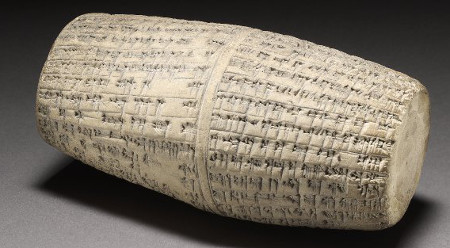You are seeing an unstyled version of this site. If this is because you are using an older web browser, we recommend that you upgrade to a modern, standards-compliant browser such as FireFox [http://www.getfirefox.com/], which is available free of charge for Windows, Mac and Linux.

Despite the long period of Seleucid rule over Babylonia (ca. 305-64 BC), there is only one known surviving example of a Seleucid royal inscription written in cuneiform, in the Standard Babylonian dialect of Akkadian. The so-called "Antiochus Cylinder," which was found in the ruins of Ezida (the temple of Nabû, the god of scribes and patron deity of the city Borsippa), is a key historical source for both Assyriologists and Classicists. This website presents a fully lemmatized and searchable edition of that exceptional Seleucid-period document, together with a few resources and materials for its study and its historical context.
RIBo, a sub-project of the Official Inscriptions of the Middle East in Antiquity (OIMEA) Project, publishes in a single place easily accessible and annotated (lemmatized) editions of Akkadian and Sumerian royal inscriptions from Babylonia that were composed between 1157 BC and 64 BC. The corpus of edited texts in this RIBo sub-project ("Babylon 10") presently includes:
